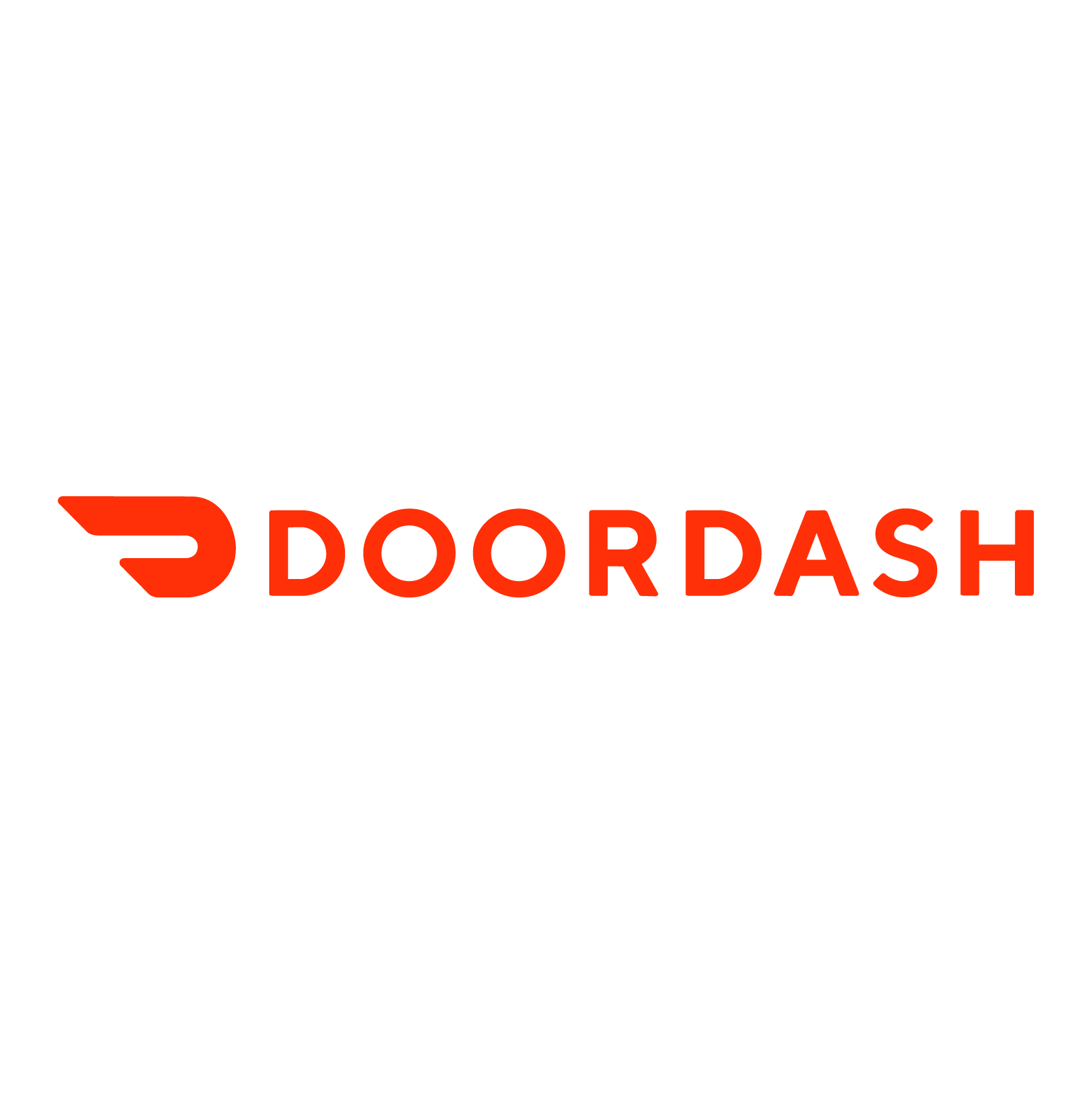In today’s fast-paced digital age, the success of a small business hinges on its ability to adapt and thrive in the ever-evolving marketplace. One transformative tool that has become a necessity rather than a luxury is an online ordering system. If you’re still on the fence about whether your small business needs one, consider this: an online ordering system can be the game-changer that propels your enterprise to new heights.
In this post, we’ll delve into the compelling reasons why your small business can’t afford to be without an online ordering system. From expanding your customer reach to boosting operational efficiency and elevating customer satisfaction, the benefits are undeniable.
QuickLook: Top Online Ordering Systems
What is an Online Ordering System?
An online ordering system is a digital platform that allows customers to place orders for products or services. It typically includes a website or mobile app where customers can browse a menu or catalog, select items, customize their orders, and make payments electronically. These systems are commonly used in various industries, such as restaurants, retail stores, and service providers, to streamline the ordering process and enhance customer convenience.
For a small business, an online ordering system is crucial for several reasons. It expands the reach of the business by making products or services accessible to a broader online audience, potentially increasing sales and revenue. It improves operational efficiency by automating order processing, reducing errors, and freeing up staff from manual order-taking tasks. It enhances customer satisfaction by providing a convenient and user-friendly way to place orders, which can lead to increased customer loyalty and positive reviews, helping the business thrive in the competitive online marketplace.
Benefits of Implementing an Online Ordering System
There are several benefits of using an online ordering system, some of which are listed below:
Increased Convenience for Customers
An online ordering system allows you to tap into a wider audience. Customers can conveniently place orders from anywhere, whether it’s from the comfort of their homes or on the go using their mobile devices. This expanded reach can lead to increased sales and exposure for your business.
Reduction of Human Errors in Order Processing
Automation is a significant advantage of online ordering systems. They streamline the order-taking and processing tasks, reducing the risk of errors and minimizing the need for manual intervention. This efficiency not only saves time but also ensures accuracy in order fulfillment.
Improved Customer Satisfaction and Loyalty
Online ordering systems offer a user-friendly and convenient way for customers to place orders. They can easily browse menus, select items, customize their orders, and make payments with just a few clicks. This convenience can lead to improved customer satisfaction, repeat business, and positive reviews.
Enhanced Efficiency and Cost Savings for Businesses
These systems often collect valuable customer data, such as order history and preferences. This data can be leveraged to personalize marketing efforts, send targeted promotions, and gain insights into customer behavior, enabling you to make data-driven decisions to grow your business.
Top Online Ordering Systems
There are several online ordering systems to choose from. Here’s a breakdown of some of the best on the market.
Wix Restaurant
Create a website without limits. Build and scale with confidence. From a powerful website builder to advanced business solutions—we’ve got you covered.
Try Wix. No credit card required.
Wix Restaurants is a feature offered by the website builder platform Wix, designed specifically for restaurants and food businesses. It provides tools and templates to create restaurant websites and offers online ordering and reservation capabilities, making it easier for restaurants to manage their online presence and engage with customers.
Key features of Wix Restaurant include:
- Customizable Menus: Users can set up and customize their restaurant menus with images, prices, and descriptions. This includes support for multiple menu categories, modifiers, and special dietary tags. The intuitive interface makes it easy to update and change items as needed.
- Online Payment Integration: The system integrates with various payment gateways, allowing customers to pay for their orders online. This reduces the need for cash handling and provides a secure transaction for both the restaurant and the customer.
- Pickup and Delivery Options: Restaurant owners can offer both pickup and delivery options to their customers. They can specify delivery zones, set minimum order amounts, and define delivery fees. This flexibility helps cater to a broader range of customers and service preferences.
- Mobile Ordering: Wix Restaurants is optimized for mobile, which means customers can order from their smartphones or tablets with ease. Given the increasing reliance on mobile devices for online shopping and food ordering, this feature ensures a seamless experience for customers on the go.
- Order Management: The platform provides a comprehensive dashboard for managing incoming orders. Restaurant staff can view order details, update order status, and communicate with customers directly from the system. This centralized management helps ensure accuracy and efficiency in the order fulfillment process.
Pricing:
- Light: $16/month
- Core: $27/month
- Business: $32/month
- Business Elite: $159/month
- Enterprise: Custom
Pros:
- Integrated Solution: Wix Restaurants is part of the Wix platform, which means restaurant owners can create a website, add a menu, and manage online orders all within the same ecosystem. This integration reduces the need for third-party solutions and streamlines the setup and management process.
- Customizability: Wix is known for its drag-and-drop website builder, and this extends to the Restaurants module. This allows restaurant owners to have significant control over the design and layout of their online menu and ordering system, ensuring that it aligns with their brand.
- Payment Options: Wix Restaurants supports various payment gateways, enabling customers to pay for their orders in multiple ways. This flexibility can lead to increased sales, as customers have the option to choose their preferred payment method.
Cons:
- Transaction Fees: Depending on the pricing plan, Wix may charge transaction fees for orders placed through the system. While these fees might be competitive, they can add up over time and cut into a restaurant’s profits.
- Limited Advanced Features: While Wix Restaurants covers the basics and can be great for small to medium-sized restaurants, larger establishments, or those looking for advanced features (like complex loyalty programs or detailed analytics) might find the platform somewhat limiting.
- Learning Curve: While Wix is user-friendly, there can be a learning curve, especially for those who are not tech-savvy. Restaurant owners might need to invest time in understanding the platform and setting up their online ordering system optimally.
Shopify
Making Commerce Better for Everyone
Shopify is supporting the next generation of entrepreneurs, the world’s biggest brands, and everyone in between
Shopify is a fully hosted e-commerce platform that allows entrepreneurs and businesses to create and manage their online stores with ease. Launched in 2006, Shopify has rapidly grown to become one of the leading e-commerce solutions in the market. It offers a user-friendly interface, making it accessible to users with little to no technical expertise.
Key features of Shopify include:
- Easy-to-Use Store Builder: Shopify offers a drag-and-drop store builder, allowing users to design their online store without any coding knowledge. There are also numerous customizable templates to choose from, which can be tailored to fit a business’s branding and aesthetic preferences.
- Secure Payment Gateway: Shopify provides its own integrated payment system called Shopify Payments, as well as integrations with various other payment gateways. This allows businesses to accept payments securely, including credit cards, digital wallets, and more.
- Mobile Optimization: Shopify stores are designed to be mobile-responsive. This ensures that customers have a seamless shopping experience whether they’re browsing from a desktop, tablet, or mobile phone. Given the growing trend of mobile shopping, this is a crucial feature.
- Inventory Management: Shopify offers robust inventory management tools. Users can track stock levels, set up automatic reorder reminders, and even integrate with dropshipping providers or third-party logistics companies. For food businesses, this can help manage perishable inventory or track popular menu items.
- App and Integration Ecosystem: Shopify’s App Store boasts a wide variety of apps that can enhance and expand the functionalities of an online store. This includes integrations with marketing tools, customer relationship management (CRM) systems, and even specialized apps for food ordering and delivery.
Pricing:
- Basic: $39/month
- Shopify: $105/month
- Advanced: $399/month
Pros:
- User-Friendly Interface: One of Shopify’s standout features is its intuitive and user-friendly dashboard. This makes it relatively easy for users, even those with minimal technical expertise, to set up and manage their online store.
- Versatility: With its extensive app ecosystem, Shopify can be tailored to fit a vast array of business needs. Whether a store needs advanced inventory management, unique marketing tools, or integration with other platforms, there’s likely an app or feature available to address that need.
- Reliability and Security: Shopify provides a secure and reliable hosting environment. The platform handles essential security measures like SSL certificates and PCI compliance, ensuring that customer data and transactions are secure. Also, with its robust infrastructure, Shopify promises 99.98% uptime.
Cons:
- Transaction Fees: Unless using Shopify Payments, Shopify charges transaction fees for each sale made through the platform. These fees can add up, especially for businesses with significant sales volumes. It’s essential to factor in these costs when considering the platform, especially if using external payment gateways.
- Customization Limitations: While Shopify offers a range of customizable themes and the ability to adjust store design, making more advanced customizations might require knowledge of Liquid (Shopify’s templating language). This can be a hurdle for those wanting to make specific changes without hiring a developer.
- Potential for Additional Costs: While Shopify provides a core set of features, many businesses find they need to add apps to expand functionality. Some of these apps come with their own monthly fees, which can increase the overall cost of operating the store, especially as the business grows and requires more sophisticated tools.
Square Online
Power Your Entire Business.
Sell anywhere. Diversify revenue streams. Streamline operations. Manage your staff.
Square Online is an e-commerce platform provided by Square. It enables businesses to create and manage online stores, process online payments, and offer various sales and marketing features, making it a versatile solution for online selling.
Key features of Square Online include:
- Seamless Integration with Square POS: One of Square Online’s standout features is its seamless integration with Square POS. This means that inventory, sales, and customer data can automatically sync between the online store and physical point-of-sale, reducing manual entry and potential errors.
- Customizable Online Storefront: Square Online offers customizable templates that allow businesses to create a professional-looking online store without needing advanced web design skills. Users can add product images, descriptions, and more to tailor their site to match their brand.
- Online Payment Processing: Square Online supports a variety of payment methods, including credit and debit cards, digital wallets like Apple Pay and Google Pay, and more. The system provides secure, PCI-compliant payment processing, ensuring that customer transactions are handled safely.
- Order Management: Businesses can track and manage online orders through a centralized dashboard. This includes updating order status, viewing sales analytics, and communicating with customers. For restaurants, there’s support for pickup, delivery, and even in-house dining reservations.
- Curbside Pickup and Local Delivery: Recognizing the changing dynamics of the retail and restaurant industries, especially in the wake of the COVID-19 pandemic, Square Online offers features to support curbside pickup and local delivery. Businesses can set their delivery areas, times, and fees.
Pricing:
- Plus: $29/month
- Premium: $79/month
Pros:
- Ease of Use: Square Online features a user-friendly interface and straightforward setup. Even individuals with limited technical expertise can create a functional online store with minimal hassle. The drag-and-drop builder and customizable templates make designing an online storefront a breeze.
- Integrated Ecosystem: For businesses already using Square’s point-of-sale system or other Square services, Square Online provides seamless integration. This ensures consistent inventory, customer data, and sales tracking across both in-person and online sales channels.
- Flexible Pricing Plans: Square Online offers multiple pricing tiers, including a free plan. This flexibility allows businesses to choose a plan that best suits their needs and budget, making it accessible for both small startups and larger enterprises.
Cons:
- Transaction Fees: Square Online charges transaction fees for online sales. While these fees are competitive with industry standards, they can accumulate, especially for businesses with high sales volumes. It’s essential for businesses to factor in these fees when calculating overall costs.
- Limited Advanced Customization: While Square Online offers a range of design templates and customization options, businesses with specific or advanced design needs might find the platform somewhat restrictive. Deep customization may require coding skills or third-party integrations.
- App Integration Limitations: Compared to some other e-commerce platforms, Square Online has a smaller app and extension ecosystem. This might limit some businesses from integrating specialized tools or functionalities that are not natively offered by Square.
Toast POS
Built for restaurants.
Built for you.
Quick to learn, and even easier to use: Toast's restaurant-first platform is built with you in mind.
Toast POS is a cloud-based point-of-sale system designed for the restaurant industry. It helps restaurants and food service businesses manage orders, payments, and other essential operations, offering features like menu management, order processing, and reporting to streamline restaurant operations.
Key features of Toast POS include:
- Integrated Online Ordering: Toast’s online ordering system seamlessly integrates with its POS. This means that when a customer places an order online, the order directly enters the restaurant’s POS system without the need for manual entry, reducing the chances of errors.
- Branded Mobile App: Toast offers the ability for restaurants to have their own branded mobile app. This is a significant advantage for building brand loyalty and providing customers with a dedicated platform to place orders, make payments, and more.
- Customizable Menu Management: Restaurants can easily update and customize their online menu. This includes adding photos and descriptions, and setting up modifiers. Any changes made to the online menu are automatically synced with the Toast POS system, ensuring consistency across all ordering channels.
- Real-time Order Tracking: Customers can track their orders in real-time, providing them with updates on preparation time and expected delivery or pickup time. This enhances the customer experience by setting clear expectations.
- Delivery Dispatch: Toast POS has a delivery dispatch system that optimizes delivery routes for drivers, ensuring that orders reach customers as quickly and efficiently as possible. This feature is crucial for restaurants managing their own delivery fleet.
Pricing:
- Quick Start Bundle: Free
- Core: $69/month
- Growth: $165/month
- Build Your Own: Custom
Pros:
- Comprehensive Integration: One of the main strengths of Toast is its comprehensive integration of various restaurant operations. From online ordering and tableside ordering to inventory management and loyalty programs, Toast combines many features into one platform, reducing the need for multiple systems.
- Cloud-Based System: Toast POS is cloud-based, which means data can be accessed from anywhere, anytime. This is especially beneficial for restaurant owners or managers who operate multiple locations or want to keep tabs on their operations remotely.
- Regular Updates & Support: Toast is known for its consistent updates, enhancing features, and addressing potential issues. The company offers strong customer support, including online resources, live support, and on-site staff training.
Cons:
- Cost: While Toast provides a lot of value, it might be more expensive than some other POS systems, especially for small establishments. There are monthly software fees, hardware costs, and payment processing fees to consider. The total cost can add up, especially for restaurants operating on thin margins.
- Hardware Limitations: Toast requires specific hardware to operate, which means restaurants might need to invest in new devices if they decide to switch to or from Toast. This could be a deterrent for establishments that have already invested in other hardware.
- Occasional Software Bugs: Like any complex software system, users have reported occasional bugs or glitches. While Toast generally addresses these issues quickly, they can cause temporary disruptions in service or require workarounds.
ChowNow
ChowNow is an online ordering and marketing platform tailored for restaurants, allowing them to create branded, commission-free online ordering systems. It enables restaurants to receive and manage orders directly from their customers through their websites or custom mobile apps, reducing reliance on third-party delivery marketplaces.
Key features of ChowNow include:
- Branded Mobile Apps: ChowNow offers restaurants the ability to create their own branded mobile apps for both iOS and Android. This allows restaurants to have a dedicated platform for their customers to place orders, fostering brand recognition and loyalty.
- Direct Website Integration: ChowNow integrates seamlessly with a restaurant’s existing website, allowing customers to place orders directly without being redirected to third-party platforms. This helps restaurants maintain control over customer experience and keeps customer data within the restaurant’s ecosystem.
- Commission-Free Ordering: One of ChowNow’s primary selling points is that it doesn’t charge restaurants a commission on orders. Instead, restaurants pay a flat fee based on their subscription plan. This can result in significant savings for restaurants compared to platforms that take a percentage of each sale.
- Marketing and Loyalty Tools: ChowNow provides restaurants with various marketing tools, such as email campaigns, to promote their online ordering system and increase customer engagement. They also offer features to set up and manage loyalty programs, helping restaurants incentivize repeat business.
Pricing:
- The base cost is $149 a month, with a one-time $399 setup fee per location. These prices go down when a business signs a contract for a longer period.
Pros:
- No Commission Fees: Unlike many third-party ordering platforms that charge restaurants a commission on each order, ChowNow operates on a flat-fee model. This can result in significant savings for restaurants, especially those with high sales volumes.
- Branding and Customization: ChowNow allows restaurants to create branded ordering interfaces on their websites and even offers customized mobile apps. This not only enhances brand visibility and recognition but also ensures a seamless customer experience.
- Direct Customer Relationship: Since ChowNow integrates directly into a restaurant’s website and branded app, restaurants maintain a direct relationship with their customers. They retain valuable customer data and can engage in direct marketing efforts without intermediaries.
Cons:
- Upfront Costs: While the absence of commission fees is a notable advantage, ChowNow does come with upfront setup fees and ongoing subscription costs. For some smaller establishments, the initial investment might be a barrier.
- Limited Marketplace Visibility: Platforms like Uber Eats or DoorDash also serve as marketplaces where users can discover new restaurants. ChowNow, focusing on direct ordering, doesn’t offer this type of marketplace visibility, which means restaurants need to drive their own traffic to their ordering platform.
- Lack of Delivery Infrastructure: ChowNow primarily facilitates the ordering process. If restaurants want to offer delivery, they’ll need to manage it themselves or integrate with third-party delivery services. This is in contrast to platforms that provide both ordering and delivery solutions.
Uber Eats
Uber Eats is a food delivery platform operated by Uber, connecting users with local restaurants and eateries. It allows customers to browse menus, place food orders, and have them delivered to their location, offering convenience and a wide variety of dining options.
Key features of Uber Eats include:
- Vast Selection of Restaurants: UberEats partners with a wide array of restaurants, from local eateries to established chains. Users can browse through different food categories, view menus, and order their desired meals with just a few taps.
- Real-Time Order Tracking: Once an order is placed, users can track the progress of their meal in real-time. This includes viewing the preparation status at the restaurant, watching the delivery driver’s route on a map, and receiving an estimated time of arrival.
- Personalized Recommendations: UberEats uses algorithms to offer personalized restaurant and dish recommendations based on a user’s previous orders, browsing habits, and location. This helps users discover new food options tailored to their preferences.
- Flexible Payment Options and Promotions: UberEats supports multiple payment methods, including credit cards, debit cards, PayPal, and even Uber Cash. Users can also access promotions, discounts, and special deals, often provided in collaboration with partner restaurants.
Pricing:
- Lite: 15% fee for delivery orders, 6% fee for pickup orders
- Plus: 25% fee for delivery orders, 6% fee for pickup orders
- Premium: 30% fee for delivery orders, 6% fee for pickup orders
Pros:
- Convenience and Speed: UberEats provides users with the ability to order food from a variety of restaurants and have it delivered directly to their doorstep. The platform is known for its relatively fast delivery times, especially in urban areas where many drivers are available.
- Broad Selection of Restaurants: The platform partners with a vast array of eateries, ranging from local favorites to popular chains. This wide selection gives users more options and allows them to discover new restaurants and cuisines.
- User-Friendly App: The UberEats app is intuitive and easy to navigate. Features like real-time tracking, personalized recommendations, and seamless payment integration make for a smooth user experience.
Cons:
- Service and Delivery Fees: The costs can add up. Users often face a combination of service fees, delivery charges, and sometimes even surge pricing during peak times. These additional fees can make meals notably more expensive than their in-restaurant prices.
- Quality Control Issues: Since Uber Eats is a platform that connects restaurants with customers, there can occasionally be discrepancies in food quality or presentation. Food might arrive cold, orders might be incorrect, or presentation may suffer during transport.
- Impact on Restaurants: While UberEats provides restaurants with increased visibility and order volume, it also charges them significant commission fees. Some restaurants argue that these fees eat into their margins, making it challenging to sustain profitability.
DoorDash
DoorDash is a food delivery and pickup service that partners with local restaurants to provide customers with a convenient way to order meals and have them delivered to their doorstep or prepared for pickup. It connects users with a range of dining options and offers a user-friendly mobile app for ordering.
Key features of DoorDash include:
- Wide Range of Partner Restaurants: DoorDash offers a diverse selection of dining options by partnering with a myriad of restaurants, from local eateries to major chains. This variety allows users to order almost any type of cuisine they desire.
- Dasher Ratings and Feedback: Customers can rate and leave feedback for their Dashers (the delivery personnel) and the food from the restaurant. This feedback system promotes accountability and helps ensure quality service.
- Scheduled Deliveries: Beyond immediate orders, DoorDash allows users to schedule their deliveries in advance. This feature is particularly useful for planning meals or events where food needs to arrive at a specific time.
- DoorDash Drive: This is a white-label delivery solution where businesses can use DoorDash’s network of drivers to facilitate deliveries for orders placed directly through the business’s own channels. It allows merchants to leverage DoorDash’s delivery infrastructure without the customer needing to order through the main DoorDash platform.
Pricing:
- $0 for 7 days, then 15% commission per delivery order for all plans
Pros:
- Convenience: DoorDash provides users with a quick and easy way to get food delivered to their location, eliminating the need for cooking or going out. This convenience is especially valuable for busy individuals or those who prefer to stay in.
- Variety of Choices: The platform collaborates with a vast number of restaurants, ranging from fast-food chains to local eateries. This wide selection allows users to explore various cuisines and dishes.
- DashPass Subscription: DoorDash offers a subscription service called DashPass. For a monthly fee, subscribers receive benefits like reduced delivery fees and exclusive deals, which can lead to significant savings for frequent users.
Cons:
- Additional Fees: Similar to other delivery platforms, DoorDash imposes various fees, including delivery fees, service fees, and potentially higher prices for menu items. When combined, these can make the total cost of an order substantially higher than ordering directly from the restaurant or picking it up in person.
- Inconsistent Delivery Quality: While many deliveries are smooth, there can be instances where orders are late, items are missing, or food arrives in less-than-ideal condition. The quality can vary based on the Dasher or the restaurant’s preparation.
- Impact on Restaurants: Although DoorDash can increase order volume for participating restaurants, the platform charges significant commission fees on each order. These fees can strain the profit margins of restaurants, especially smaller establishments.
OpenTable
OpenTable is an online restaurant reservation platform that allows diners to browse, book, and manage restaurant reservations at a wide range of eateries. It provides a convenient way for customers to secure dining reservations and discover new restaurants based on location, cuisine, and other preferences.
Key features of OpenTable include:
- Online Reservations: OpenTable’s core functionality allows users to search for available tables at various restaurants and make real-time reservations. The system provides immediate confirmation, and users can select their preferred date, time, and party size.
- Reviews and Ratings: After dining, users can leave reviews and rate their experience, helping other diners make informed decisions. These reviews provide insights into the food quality, ambiance, service, and other aspects of the dining experience.
- Loyalty Program – OpenTable Points: Users earn points for every reservation they make and honor through the platform. Accumulated points can be redeemed for dining rewards or gift cards, encouraging repeated use of the service.
- Personalized Recommendations: OpenTable offers personalized restaurant recommendations based on user preferences, past reservations, and dining histories. This helps users discover new dining experiences tailored to their tastes.
Pricing:
- Basic: $39/month
- Core: $249/month
- Pro: $449/month
Pros:
- Ease of Use: OpenTable’s platform, both on its website and mobile app, is user-friendly and intuitive. Diners can easily search for restaurants, check availability, and make reservations within minutes. Immediate confirmation and reminders add to the convenience.
- Vast Network of Restaurants: OpenTable has partnerships with a wide variety of restaurants, from local eateries to high-end establishments. This extensive network allows diners to explore and book tables at numerous places, all in one platform.
- Rewards System: The OpenTable Points loyalty program incentivizes users to make and honor reservations through the platform. Accumulated points can be exchanged for dining rewards or other offers, adding value for frequent diners.
Cons:
- Fees for Restaurants: For restaurants, OpenTable can be a significant expense. The platform charges fees for every reservation made through the system, and these costs can add up, especially for popular venues with high booking volumes.
- Limited Availability Display: While OpenTable shows available time slots, it might not always display the full availability at a restaurant. Some restaurants might keep certain slots off the platform or give preference to direct bookings, potentially limiting choices for OpenTable users.
- Over-reliance: Restaurants that heavily rely on OpenTable might find themselves at a disadvantage if there are technical issues with the platform or if they decide to switch to a different system. They risk losing a significant source of reservations and need to work on redirecting their regular customers to the new system.
Key Features to Consider When Selecting an Online Ordering System
Choosing an online ordering system isn’t easy. As mentioned, there are several factors to weigh what’s best for your small business. Here’s a quick breakdown:
User-Friendly Interface for Customers
A user-friendly interface ensures that customers have a seamless, hassle-free experience from browsing products or menus to placing an order. A positive experience can lead to higher customer satisfaction and loyalty.
Customization Options for Menus and Ordering Process
Customization allows businesses to align the look and feel of their online ordering platform with their brand identity. Every business has unique offerings, processes, and customer preferences. Customization ensures the system can adapt to a business’s specific needs, rather than the business having to adjust to the system’s limitations.
Compatibility with Various Payment Methods
Offering multiple payment options ensures that businesses cater to a broad range of customers, including those with specific payment preferences, thereby maximizing potential sales.
Robust Reporting and Analytics Capabilities
Analytics provide insights into sales patterns, customer behavior, and product performance, enabling businesses to make data-driven decisions and optimize their offerings.
Integration with Existing Business Systems
Integration ensures that the online ordering system communicates seamlessly with other systems, such as inventory management, CRM, accounting software, and more. This synchronization avoids manual data entry, reduces errors, and ensures that all systems are up-to-date.
Navigating the Digital Dine-In: The Future of Online Ordering Systems
In the rapidly evolving landscape of e-commerce, online ordering systems have emerged as pivotal tools for businesses seeking to cater to the digital-savvy consumer. These platforms have not only reshaped how businesses operate but have also transformed consumer expectations. As technology continues to advance and integrate even more seamlessly into our daily lives, the potential of online ordering systems is boundless.
FAQs
How does an online ordering system work?
An online ordering system facilitates the purchase of products or services via the Internet. Typically used by businesses like restaurants, retail stores, and service providers, such a system streamlines the ordering process for both the business and the customer.
What benefits does an online ordering system offer for businesses?
An online ordering system boosts businesses by increasing sales and expanding customer reach beyond physical locations. Such systems enhance operational efficiency, facilitate data-driven decisions through analytics, and improve customer experience with features like real-time tracking and order customization.
They also offer ample marketing opportunities, streamline labor and inventory management, and, by automating order processes, promote up-selling and cross-selling. Additionally, businesses benefit from reduced third-party dependencies and improved cash flow due to upfront online payments.
How secure is the online ordering system?
The security of an online ordering system largely depends on the measures implemented by the platform provider and the business using it. In general, reputable online ordering systems prioritize security, but the level of protection can vary.
Can an online ordering system integrate with existing websites or social media platforms?
Yes, many online ordering systems are designed to integrate seamlessly with existing websites and social media platforms. They often provide plugins, widgets, or embeddable code that can be added to a business’s existing website. Businesses can leverage their social media presence by integrating online ordering directly into platforms like Facebook and Instagram. For instance, a restaurant could have a “Shop Now” or “Order Now” button on their Facebook page.
How can an online ordering system help in managing inventory?
An online ordering system, when integrated with inventory management capabilities, can significantly streamline and optimize inventory processes for businesses. For example, as customers place orders, the system can automatically deduct sold items from the inventory count in real time, ensuring that stock levels are always current.
Integrating an online ordering system with inventory management functionalities can lead to efficient operations, reduced waste, cost savings, and improved customer satisfaction due to fewer stock-outs and accurate product availability information.













